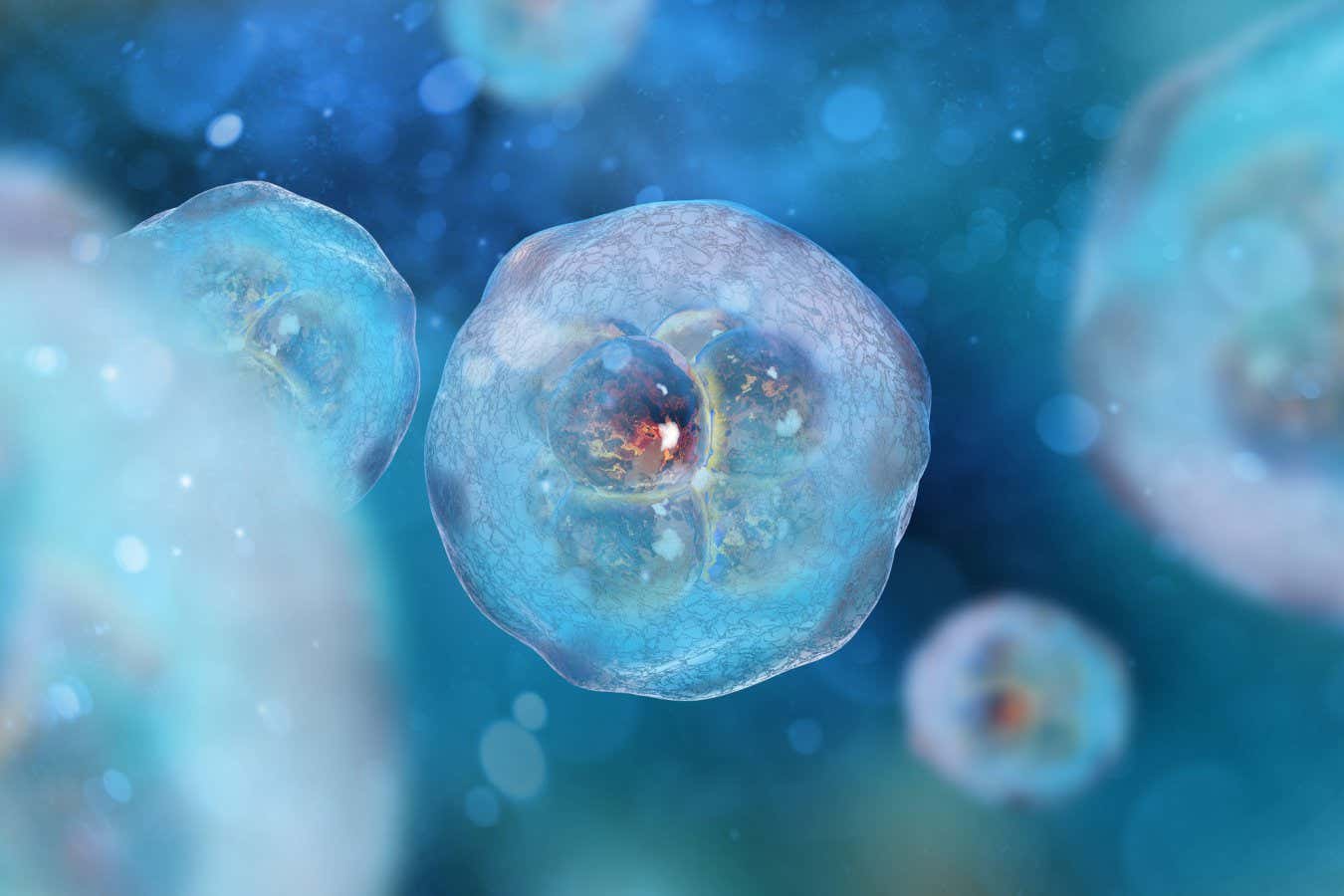The first human embryo-like structures have been created from stem cells and reached a landmark stage of development, in a move that could help scientists study the causes of early miscarriages
By Clare Wilson
15 June 2023
The “synthetic embryos” have been created from stem cells grown in the lab
Andrew Vodolazhskyi/Alamy
A team at the University of Cambridge has announced making the first human “synthetic embryos” – embryo-like structures made from stem cells – that have been grown to a stage equivalent to just past 14 days old, the legal limit to study natural embryos in the UK. The work could help researchers study the causes of early miscarriages and understand how organs develop, but some scientists want to tighten regulations covering this field.
What are synthetic embryos?
The term is somewhat misleading as these structures aren’t really synthetic, nor are they exactly the same as embryos. They are similar to early embryos, a tiny ball of cells arising from a sperm fertilising an egg, but created from stem cells grown in the lab.
These structures haven’t been wholly synthetically created, as the stem cells came from an embryo originally, and they seem to have certain differences to naturally formed embryos. Some therefore prefer to call these entities stem-cell-based embryo models.
Advertisement
How much of an advance is this?
Until recently, only synthetic embryos made from animals such as mice and monkeys had been made, although Magdalena Żernicka-Goetz at the University of Cambridge had made it public that she was developing their human equivalents. On 14 June, she announced her team had grown the human versions to a stage at which a real embryo would implant into the uterus and start developing some different tissues, including the precursors of cells that go on to form sperm and eggs.
“In real embryos this [is equivalent to] a stage between day 7/8 and day 14,” says Żernicka-Goetz. She presented her work at the International Society for Stem Cell Research’s annual meeting in Boston, Massachusetts, as reported by The Guardian, but hasn’t yet published the full report in a peer-reviewed paper
Why make synthetic embryos?
One reason is they can be made in unlimited numbers, while spare IVF embryos, which are used in early developmental research, are in short supply. All embryos in a batch made from the same stem cells are also more or less genetically identical, which is of great use for studying their response to different experimental conditions. It is also quicker and easier to genetically modify stem cells grown in a dish to understand the functions of different genes.
